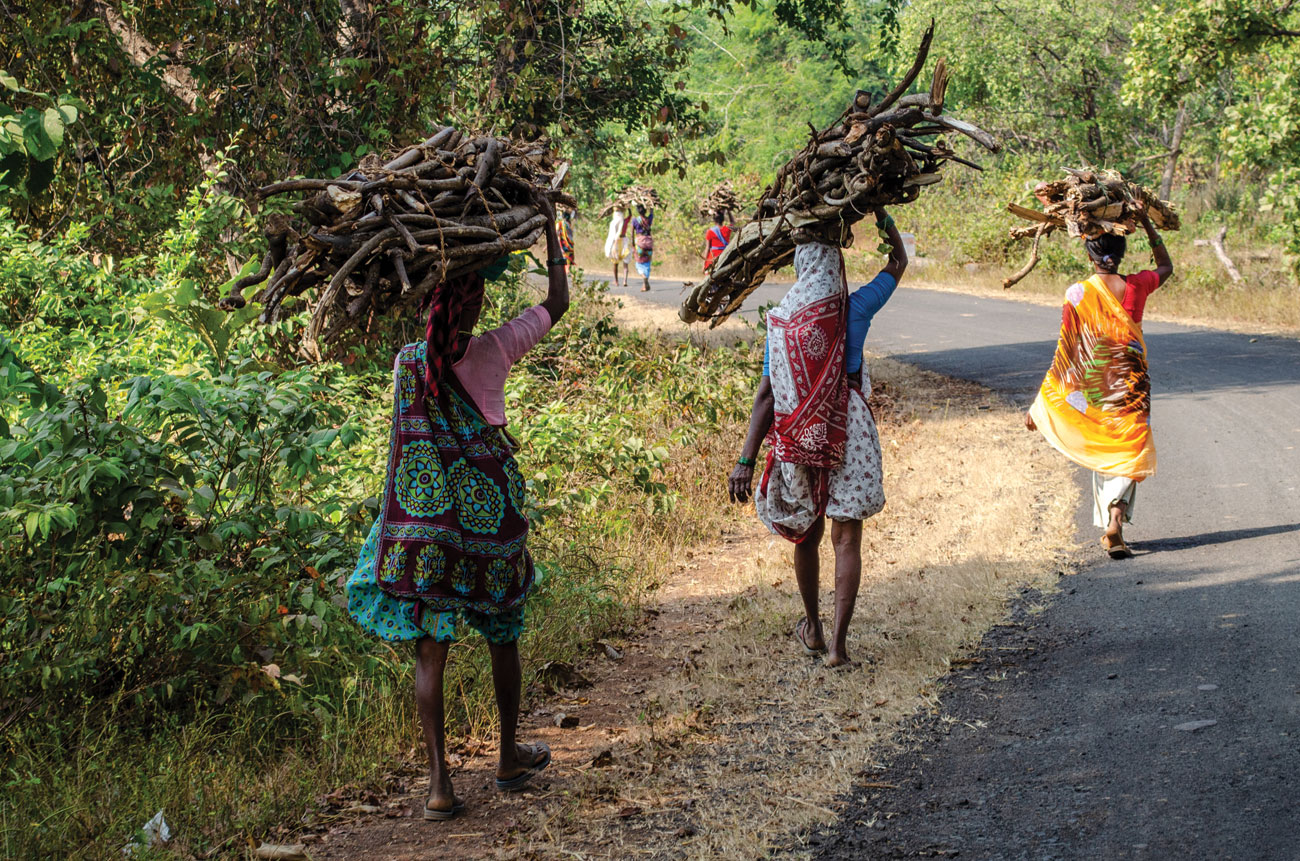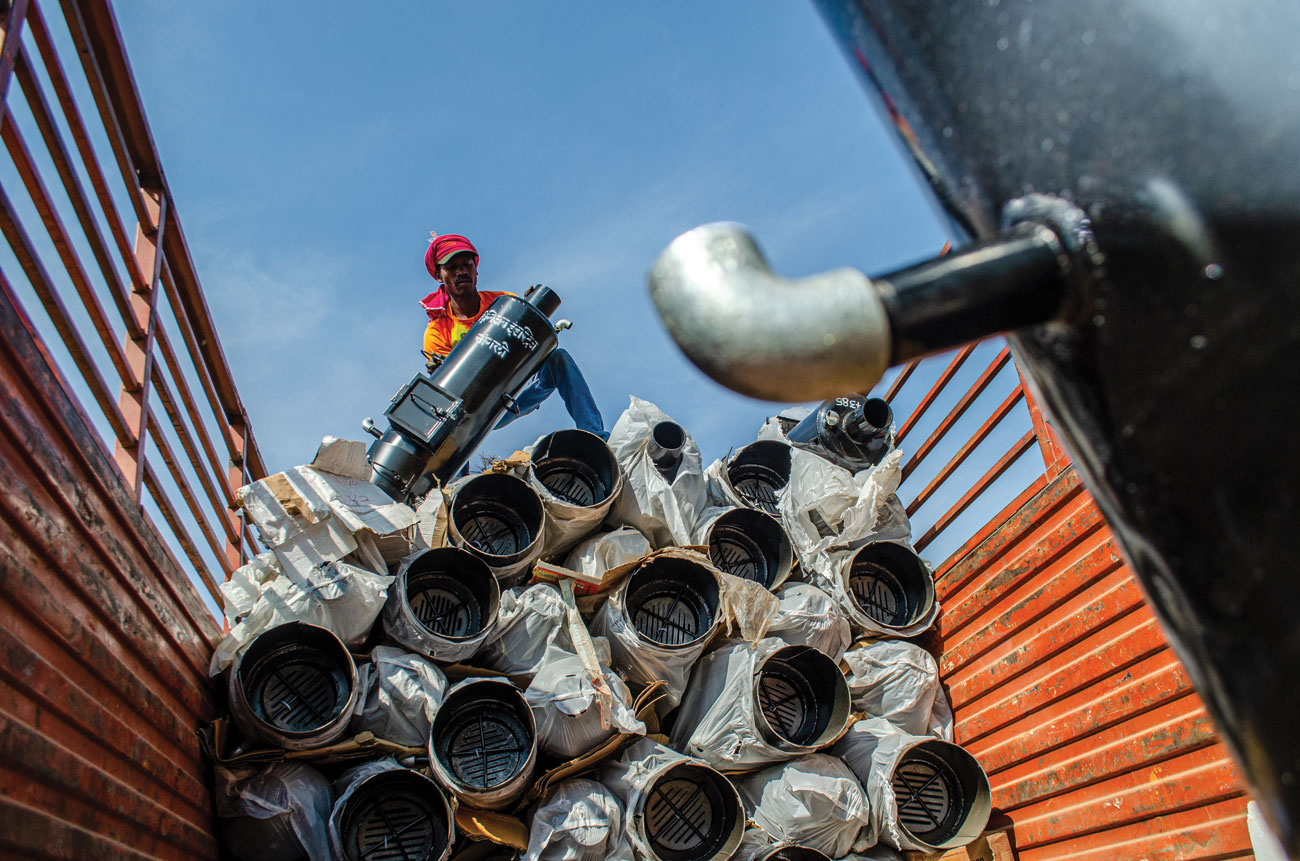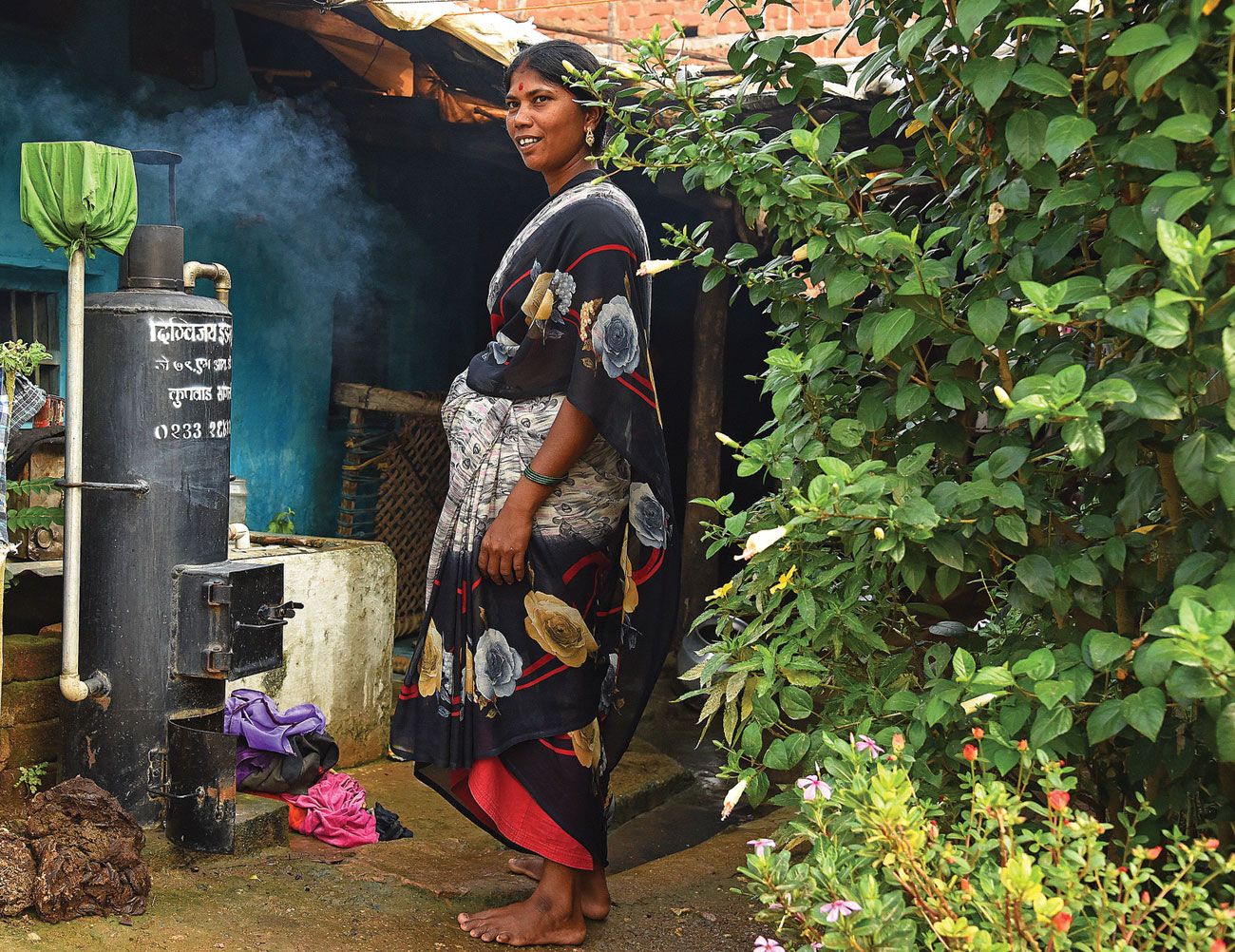How A Water Heater Can Change And Save Lives
First published in Sanctuary Asia,
Vol. 43
No. 2,
February 2023
By Rizwan Mithawala
Bony and dishevelled, Kanta Kamde stands barefoot outside her house. I stand with her in silence, arms wrapped around my chest, gaze lowered. It feels like a condolence visit. Then she speaks, “We had run out of firewood. The cooking gas cylinder too was exhausted; we had not refilled it in a long time.”
It was a cloudy afternoon in June 2022. Kanta, her husband Rajendra, and the younger of their two sons walked to the forest nearby to collect firewood. Rajendra decided to take a break and sat down to chew tobacco. “The tiger came out of nowhere,” she says. In a wink, her husband was flat on his stomach, and a tiger was crouching on his back. She ran to save him, and so did her son, carrying an axe. “When the tiger left him, he had just a few breaths left,” she says.
Just two days later, her neighbour Manda Kamde lost her husband. He had gone to sow seeds, not on a farm, but on land that encroached into the forest. She uses a single word, loaded with meaning, to describe this kind of farming – ‘jabran’. It has two meanings, and both are relevant for marginalised families like hers – ‘by force’, and ‘under compulsion, when left with no choice’. “Why should we not feed ourselves off the forest? To steal from the forest is better than stealing from someone’s house,” she explains without being asked.
Kanta and Manda live in the forest-bordering village of Halda, in the Bramhapuri Forest Division of Maharashtra’s Chandrapur district. Bramhapuri harbours a healthy population of tigers and supports 608 villages. To a large extent, people here depend on the forest for their sustenance; one of the primary needs that compel them to visit the forest is firewood. “Sarv kahi kaadyawar (Everything depends on firewood),”says Kanta. “Saglya goshti jungle madhech... tarch aamhala pot bharayla jamtay (We depend on the forest for everything...that’s how we feed ourselves),” says Manda.

Women have to walk several kilometres to bring firewood from the forest. Apart from the physical hard work, there is always a possibility of encountering a wild animal. Photo: RIzwan Mithawala/WCT.
A Novel Community-Oriented Project
Many families and village leaders from Bramhapuri’s villages feel that lives here are slowly changing, thanks to an energy-efficient, biomass-fuelled water heater, known as bumbb in Marathi, which is promoted and distributed by the Wildlife Conservation Trust (WCT) at a 75 per cent subsidy. Jaindra Khobragade is an ASHA (Accredited Social Health Activist) worker in Nanded village in Naghbhid taluka of Bramhapuri. She used to walk close to nine kilometres to get firewood from the forest; along with the physical hard work, there was always a possibility of encountering a wild animal. But that was two years ago, when she was still using the traditional chulha to heat water for bathing. “Now I have the bumbb. The hardship of going to the forest has reduced greatly,” she says. “Now I need very little firewood, as I mainly use leaf litter and agricultural waste as fuel for the bumbb. But that’s not all; the chulha would heat a single vessel of water in 20-25 minutes. That would suffice only for a single person for bathing. The bumbb is able to heat enough water for four people in the same duration.”
WCT has so far equipped 4,015 households in Bramhapuri with the heater, with the BNP Paribas India Foundation helping scale the project. Following the successful adoption of the heater by the families, the Maharashtra Forest Department has adopted the same model and is now expanding the supply of the water heater in several forest villages of Chandrapur. The Department has so far equipped 1,015 households.
Women who use the chulha have to sit by it to constantly move the firewood and blow on it for effective burning. The smoke causes irritation in the eyes and respiratory problems. “There is no need to attend to the bumbb. I am able to use that time for other work,” says Khobragade, adding, “Imagine I have fired the bumbb in the morning, and I get an emergency call – a woman is about to deliver. I will rush to her house. When I return after three hours, the water in the bumbb will still be hot.” Her thoughts are echoed by another ASHA worker, her neighbour Sanghamitra Khobragade. “When we did not have the bumbb, we would leave for the forest (to collect firewood) at 10 a.m. and return by 5 p.m. Now, to fuel the bumbb, we just collect some fallen sticks from around the field and combine them with agricultural waste. The risk of running into wild animals has ceased. Our lives are much safer now,” she says.

Women who use the chulha are exposed to huge amounts of smoke, which can cause respiratory problems and irritation in the eyes. Photo: RIzwan Mithawala.
Sustainability At Several Levels
Speaking to the beneficiaries of the water heater, three Marathi words fall into my ears repeatedly: turati, govrya and pala-pachola. In Bramhapuri, the toor (a type of lentil) crop is grown on the bunds that border the rice fields. The residue of the crop, in the form of its stems, is locally known as turati. These dry stems were not of much use before the heater reached these villages. Now, they are a valuable resource as they burn efficiently in the burner compartment of the heater. Govrya are good old dried cow dung cakes, always available around the corner in Indian villages. Pala-pachola is leaf litter and sundry agricultural waste. The communities have themselves figured out the best fuel mix for the heater: crop residue mixed with cow dung. With the clever use of these alternatives, many say that visiting the forest is now a thing of the past.
“The fuel innovations that the community has come up with speak to the ‘sense of ownership’ that the people feel about the heater, which is the most critical aspect of any intervention, for it to lead to a sustainable change in behaviour,” says Aniket Bhatkhande, Head of WCT’s Conservation Behaviour team that runs the project. In Kitali Bormala, the first village to receive the bumbb, I come across an old heater with a brand-new vent hood. Its young owner, Sandip Masram, proudly tells me that they have been using it for three years, and he recently got a new vent hood made. A beneficiary maintaining the water heater for continued use also demonstrates the community taking ownership of the intervention.

A truck full of water heaters is unloaded for distribution at a village in Bramhapuri, in Maharashtra’s Chandrapur district. Photo: RIzwan Mithawala/WCT.
Gaining Support
However, it took time for the villagers to accept and adopt the heater. Murlidhar Gaurkar is the sarpanch (village head) of the 800-household Nanded village, and has been an ardent supporter of the bumbb. “Initially, people did not believe that a simple heater, that too one, which doesn’t require electricity, could heat water for four people in 15 minutes. Even after attending live demonstrations, many thought there was no need to pay for a water heater, even if it was made available at a 75 per cent subsidy, while firewood was free. At that time, they did not factor in the day’s earnings that they forgo when they go for firewood collection, nor the risk to life from animal encounters,” he says, while supervising the unloading of a truck full of the heaters – the third round of distribution in his village, taking the count to 400. “The game changer for our people was the fact that it could be fuelled with turati. People realised it would relieve them of the burden of going to the forest altogether. After that, it was the adopters who influenced their neighbours and relatives. People looked at their neighbours who had stopped going to the forest and were using turati and other waste material to heat water, and soon followed in their footsteps.”
I ask Gaurkar if he sees the bumbb as an effective intervention for reducing human-wildlife conflict and deaths. “Now we have the LPG for cooking, bumbb for heating water, and turati and cow dung to fuel the bumbb. Why will people go to the forest? Lives have become easier with these facilities, and people have become lazy,” he says with a chuckle.

The water heater distributed by WCT is reducing the need for women to visit the forest to collect firewood, and also their exposure to harmful smoke. Photo: Dr. Anish Andheria.
I ask WCT’s Development Scientist Tamanna Ahmad, who, along with the field team, is responsible for implementing the project, about how the project has evolved, and where she sees it heading. She says, “It has been three years since the first bumbb was delivered. We have seen villagers move from hesitation to a point where they want us to prioritise their village over the neighbouring one for another round of distribution. This success has reinforced our faith in science-backed interventions, as we work towards finding solutions that directly address the causes of conflict and human deaths.”
Rizwan Mithawala is a Conservation Writer with the Wildlife Conservation Trust and a Fellow of the International League of Conservation Writers.





